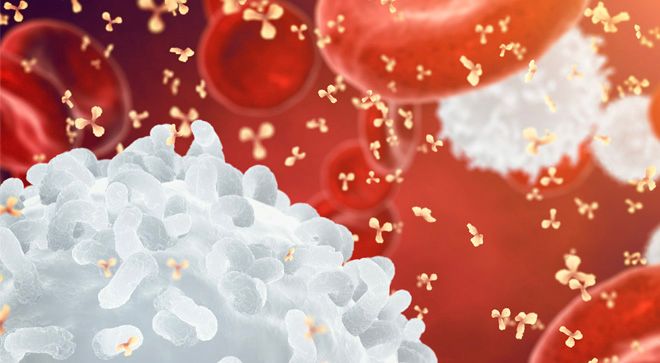News
Article
‘Remarkable’ Results from Tecartus in Patients With R/R MCL
Author(s):
Patients with relapsed/refractory mantle cell lymphoma described by one expert as “older, sicker and more heavily pretreated” than those previously studied experienced impressive responses to treatment with CAR-T cell therapy Tecartus.
At a median follow-up of 33.5 months, the overall response rate for patients given Tecartus was 87%.

Patients with relapsed/refractory mantle cell lymphoma (r/r MCL) described by one expert as “older, sicker and more heavily pretreated” than those previously studied experienced impressive responses to treatment with CAR-T cell therapy Tecartus (brexucabtagene autoleucel, also known as brexu-cel), according to recent study findings.
Among 23 patients with r/r MCL who received commercially available Tecartus during the ZUMA-18 study, the median age was 69 years, 78% of whom were male and who received a median of four prior treatment regimens, according to study results published in the journal Blood.
At a median follow-up of 33.5 months, the overall response rate (ORR; patients whose disease responded partially or completely to treatment) was 87%, or 20 patients, with 13 patients (57%) experiencing a complete response, seven patients (30%) seeing a partial response and two patients (9%) experiencing disease progression, the study noted.
The median duration of response in ZUMA-18 was 15.1 months among responders and 20 months for patients who experienced complete responses. Median progression-free survival (PFS; the time a patient lives without their disease spreading or progressing) was 16.1 months among all patients and 21 months among patients who experienced a complete response, according to data presented during the 2023 American Society of Hematology (ASH) Annual Meeting and Exposition.
Additionally, the median overall survival (OS; the time a patient lives following treatment, regardless of disease status) was not reached, meaning more than half of the participants were still alive by the time of the data cutoff, and the 24-month OS rate was 58%.
Researchers also reported in Blood that as of the data cutoff of Feb. 3, 2023, nine patients (39%) had died, with five deaths due to side effects: one from multiple organ dysfunction syndrome, related to Tecartus, and four (two from sepsis and one each from aspiration and encephalopathy) found to be unrelated to Tecartus. Two deaths each were due to progressive disease and other causes.
All patients experienced at least one grade 3 or higher side effect, and 18 (78%) of patients experienced at least one treatment-related grade 3 or higher side effect, with grade 3 or higher cytokine release syndrome (an influx of inflammatory molecules, called cytokines) and neurological events occurring in one (4%) and eight patients (35%), respectively, according to the study.
Grade 3 or higher hematologic treatment-emergent side effects occurring in at least three patients included anemia (low red blood cells, 43%), neutropenia (low neutrophils, a type of white blood cell, 26%), leukopenia (low leukocytes, or white blood cells, 17%), febrile neutropenia (fever experienced by a patient with neutropenia, 13%) and thrombocytopenia (low platelets, 13%), while any-grade cytokine release syndrome or neurological events occurred in 87% and 70% of patients, respectively, according to the data presented at ASH.
Researchers found these findings to be consistent with those of the prior ZUMA-2 trial, which served as the basis for the Food and Drug Administration (FDA)’s 2020 approval of Tecartus as the first CAR-T cell therapy for the treatment of r/r MCL, with no new safety signals observed, and ZUMA-2 and ZUMA-18’s 91 total participants experiencing a combined median OS of 46.4 months and a 62% 24-month OS rate.
The results of ZUMA-18 are notable because patients, “in spite of being sicker, older and more heavily pretreated (than those in ZUMA-2) saw some very high response rates. … What it tells you is that in order to have the full benefit of CAR-T it’s better to refer patients earlier,” as Dr. Andre Goy, physician in chief with Hackensack Meridian Health Oncology Care Transformation Services, chairman and chief physician officer and chief of the lymphoma division at the John Theurer Cancer Center, Hackensack University Medical Center, explained during an interview at ASH.
At a July 23, 2022 median follow-up of 47.5 months, the median OS of ZUMA-2 patients was 46.4 months. Thirty patients were still alive, 27 of which had achieved complete response, and the median OS for patients with complete response was 58.7 months, Goy stated in a presentation at ASH.
The median age at the time of enrollment for ZUMA-2 was 65, four years younger than those who participated in ZUMA-18, while 35% of ZUMA-2 patients and 57% of ZUMA-18 patients had an ECOG performance score of 1, meaning they were restricted in their ability to perform strenuous activity, Goy said.
“The responses were still very impressive with a response rate of close to 90%, a CR rate of 57% and amelioration of response that was about 16 months, and the median overall survival has not been reached with three years follow up,” Goy said. “So this is really, really important and there was no new safety signal. … What is interesting in this is that the median overall survival (was not reached) in the population that was very heavily pretreated that would not have qualified for a clinical trial, (they) had no option. None of these patients could have had another transplant, that would have been the only way to save these patients (and) none of them could have done this, they were too old. They didn't have the time to find a donor and given the (graft-versus-host) issue they would not have been able to do that. Many of these patients also had comorbidities.
“So, finding that at three years median, overall survival has not been reached (in) this population is actually remarkable.”
For more news on cancer updates, research and education, don’t forget to subscribe to CURE®’s newsletters here.



